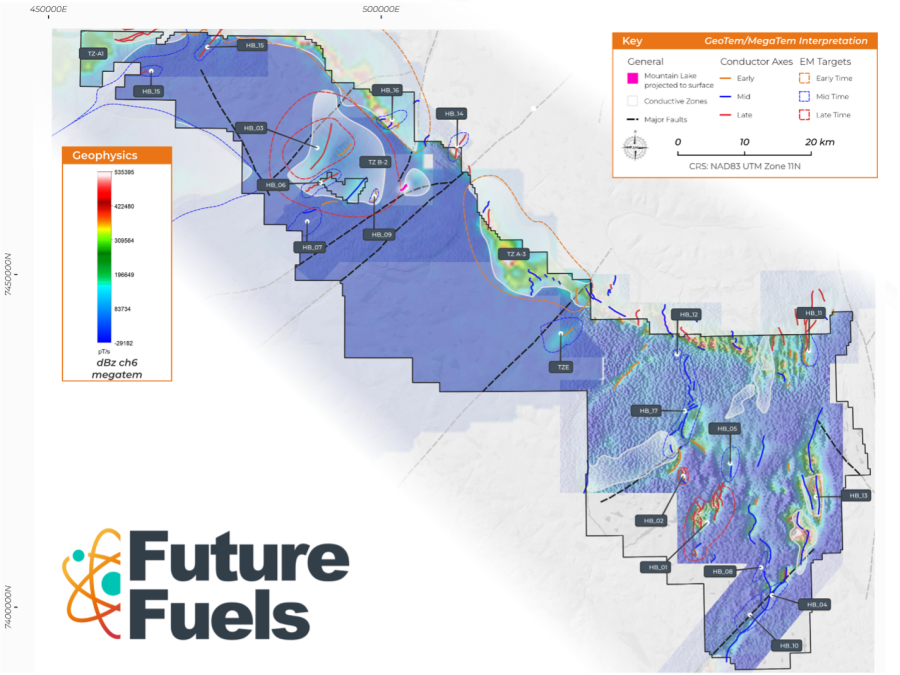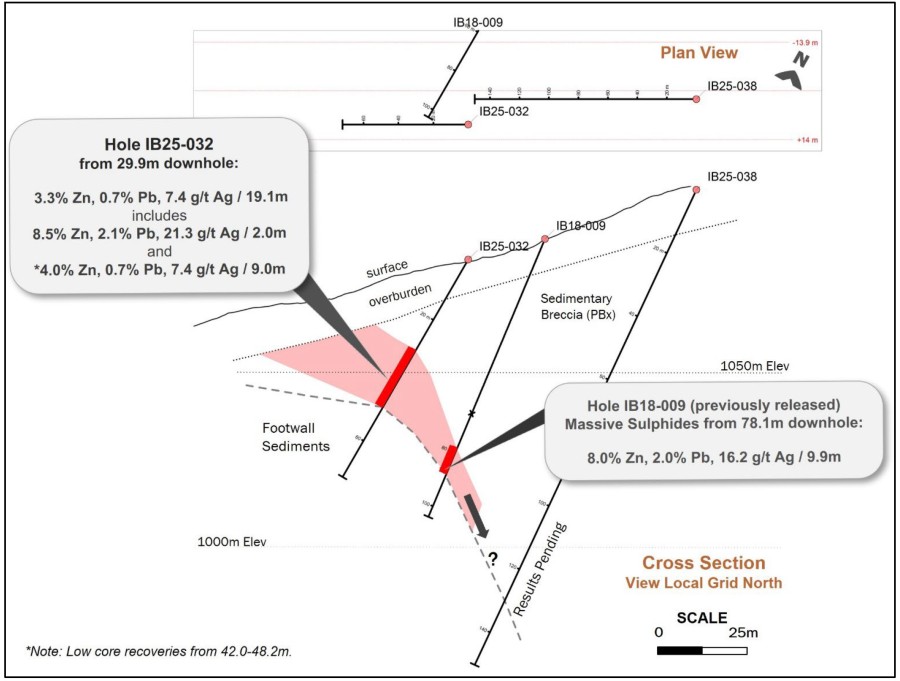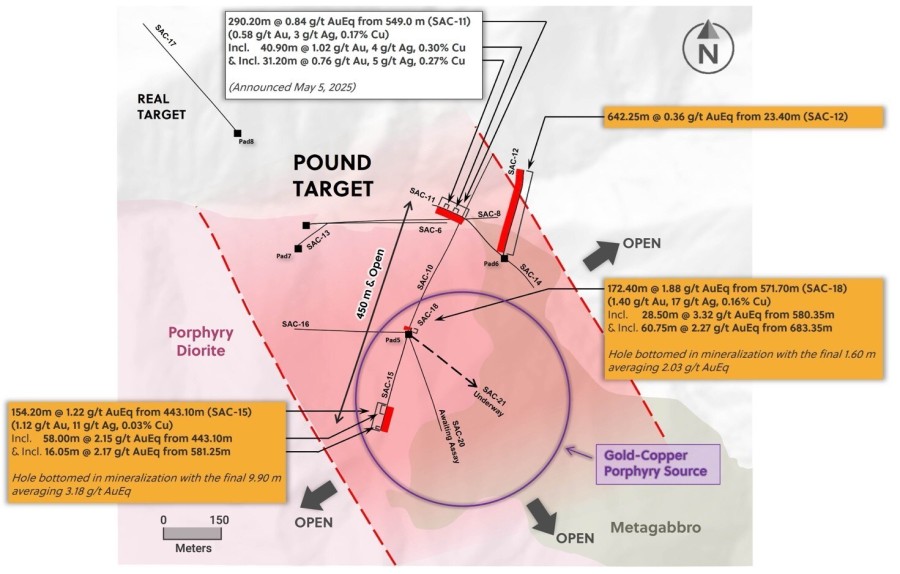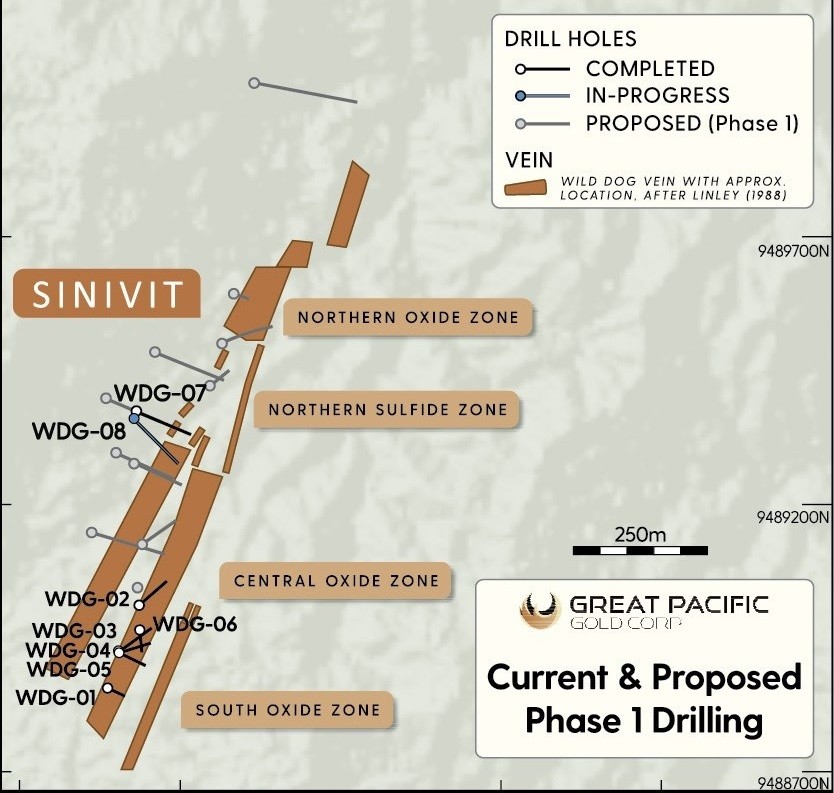VANCOUVER, BC / ACCESS Newswire / June 10, 2025 / Future Fuels Inc. (TSXV:FTUR) (FSE:S0J) ("Future Fuels" or the "Company") is pleased to announce that it has received the results from Southern Geoscience Consultants, which includes a comprehensive review of all historical geophysical surveys completed across the Company's significant land package in the Hornby Basin, Nunavut Territory (the "Project" or the "HornbyProject"). The reinterpretation identified 22 high-priority uranium exploration targets that remain untested by previous drilling programs.
"Our team has been hard at work digitizing and analyzing substantial amounts of data generated by some of the world's largest resource companies. With over 26,000 metres of historic drilling and numerous surveys, we estimate the value of this work being in excess of C$15 million. The result of these efforts has positioned Future Fuels for the next phase of exploration success in the Hornby Basin," commented Rob Leckie, President & CEO of Future Fuels, "This data analysis has identified nearly two dozen high priority targets that have yet to be drill tested and supports our view that the Hornby Basin hosts large scale mineral deposits."
The results of the comprehensive geophysical review identified 22 priority electro-magnetic (EM) conductor targets that have not been sufficiently tested by historical exploration programs. In addition, over 1,800 individual conductor picks and 130 conductor axes were identified, with each having the potential to be upgraded to a target as the Company continues to integrate additional new and historical datasets.
Key Highlights
-
Future Fiels has completed a comprehensive review/assessment of geophysical surveys representing over $15 million* in acquisition value at today's costs.
-
22 high priority targets were identified across conductive zones broadly distributed throughout the Project showing similarities to Mountain Lake characteristics and unconformity-style mineralization.
-
Over 120 new digitized geological products were created for integration with VRIFY's artificial intelligence and machine learning models.
-
Multiple conductive zones were identified that align with structural features in magnetic and gravity data, indicating the presence of potential pathways for uranium-bearing fluids.
Strong undrilled electromagnetic conductors were identified 1km south of historical drilling at the Wolf showing that intersected elevated boron - a critical uranium pathfinder element used in major discoveries. Future Fuels plans to continue to utilise modern and recently available Artificial Intelligence and Machine Learning methods to complete the first ever data-driven prospectivity analysis of the Hornby Basin. This will result in the planning of an extensive targeted drilling program at Mountain Lake and across the Project.
Program Overview
The work consisted of systematically reprocessing all available datasets, merging overlapping surveys where possible, and generating a unified property-wide geophysical database. This integrated approach enables Future Fuels to prioritise drill targets and design future exploration programs with a firm understanding of the basin's geophysical characteristics. The main phase of interpretation focused on reinterpreting the MegaTEM and GeoTEM electro-magnetic datasets to identify conductive anomalies similar to these associated with the Mountain Lake deposit and unconformity-type targets elsewhere in proven uranium districts.
The Hornby Project represents a unique opportunity in modern uranium exploration. Between 1998 and 2009, various operators conducted extensive airborne geophysical surveys across the property, including 10 magnetic surveys, 6 radiometric surveys, 8 electromagnetic surveys, and 2 gravity surveys. However, these surveys were collected in a fragmented manner by different companies operating independently or through joint ventures, with each operator focusing only on their specific land holdings. Critically, these datasets had never been compiled, harmonized, or interpreted together as a unified exploration program.
Future Fuels recognized the extraordinary value of this fragmented data archive and understood that a comprehensive re-interpretation could reveal previously unrecognized geological trends, anomalies, and drill targets. By completing a property-wide data compilation and harmonization program, the Company has generated multiple high-priority targets in a cost-effective manner while leveraging the substantial historical exploration investment. This strategic approach became possible only after Future Fuels consolidated the entire Hornby Basin under single ownership over the past year, providing unprecedented access to integrate all historical exploration data across the complete property package.
 Figure 1: the 22 EM targets generated are shown overlain on the GeoTEM and MegaTEM B-Field Z-Coil Channels 6.
Figure 1: the 22 EM targets generated are shown overlain on the GeoTEM and MegaTEM B-Field Z-Coil Channels 6.
The Results
The map presented in Figure 1 shows all targets overlain on the GeoTEM and MegaTEM B-field Z-coil channel 6 gridThe geophysical response patterns vary significantly across the land package due to underlying geological differences, particularly in the southeast where dyke swarms create strong magnetic interference. However, Helikian-aged sandstones cover the main portions of the license area, providing the ideal geological environment for uranium mineralization similar to other Canadian uranium districts. Within the sandstone basin sediments, there are 9 zones of elevated conductivity, shown by the white circular features in the map. The Mountain Lake deposit sits on the margins of one of these zones, with a larger zone to the west. Associated with this larger zone of conductivity, Southern Geoscience Consultants identified 4 late to mid time anomalies. Of particular interest are targets HB-03 and HB-06 which are late time responses and coincide with a diffuse magnetic signature. It's hypothesised that this response observed in the magnetics could be a result of hydrothermal alteration - a common characteristic of unconformity style deposits.
In the southeast area of the project are the two highest priority targets HB-01 and HB-02. The electromagnetic anomaly occurs adjacent to historical geochemical anomalies and sits within a pronounced magnetic low that is bordered by strongly magnetic rocks. This geological setting often indicates structural control that can focus uranium-bearing fluids. Most significantly, historical drilling conducted approximately 1km north of this target intersected elevated boron values reaching 200ppm in drill hole HB-05-18. Boron is an important pathfinder mineral in uranium exploration and was important in the discovery of Key Lake1 in the 1970s, and Fission's Triple R at Patterson Lake2. While drilling successfully identified Boron the drilling however was 1km north from the EM conductor targets and therefore, the actual anomaly remains completely untested.
HB-02 occurs in the existing target area known as Contact Lake and the 3Ts showings. However, the new electromagnetic interpretation reveals that these anomalies extend over a substantial 10km by 6km area, and importantly, the strongest electromagnetic responses within this large zone have never been drill-tested. This situation suggests that previous exploration programs may have focused on the periphery of the main mineralized system rather than its core. The table below briefly describes the other targets identified in this phase of re-processing.
Table 1: A brief descriptive summary of all the priority targets shown on the map in figure 1.
|
Comment |
Initial Rank |
Target _ID |
|
Large magnetic low bordered on both sides by strongly magnetic rocks, multiple conductive late-time anomalies. Adjacent to geochemical and drilling results. |
1 |
HB_01 |
|
Untested late time anomaly close to T3. |
1 |
HB_02 |
|
Late-time anomaly in zone of fuzzy magnetic signature same region as Mountain Lake. |
1 |
HB_03 |
|
Close to magnetically defined structure. |
1 |
TZ B-2 |
|
Point at which 2 mid-time anomalies converge coincident with geochemical samples. |
2 |
HB_04 |
|
Linear mid-time anomaly within magnetic low adjacent to magnetic bodies. |
2 |
HB_05 |
|
Late-time anomaly, zone of fuzzy magnetic signature same region as Mountain Lake. |
2 |
HB_06 |
|
Similar stratigraphic contact as Mountain Lake, anomalous magnetic body with poorly defined conductive body to the NW. Untested. |
2 |
HB_07 |
|
Single late-time anomaly adjacent to linear magnetic unit. |
2 |
HB_08 |
|
Poorly defined conductive anomaly along contact near Mountain Lake. |
2 |
HB_09 |
|
Mid-time conductor near showings associated with NE structure, gravity contact. |
2 |
HB_10 |
|
Weak late-time conductive anomaly in magnetic low. |
2 |
HB_11 |
|
Discrete late-time anomaly adjacent to dyke. |
2 |
HB_12 |
|
Small discrete feature. |
2 |
TZE |
|
Looks to be formational conductor; possible Athabasca style analogue; this section underlain by intrusive rocks. |
2 |
TZ-A1 |
|
Conductive zone in area with shallow basement. |
2 |
TZ-B1 |
|
Poorly defined conductive anomaly along structure near Mountain Lake. |
2 |
HB_14 |
|
Small late time anomaly along contact of interpreted intrusive. |
2 |
HB_15a |
|
Early time anomaly along linear feature that is grows in strength. Near interpreted intrusive contacts. |
2 |
HB_15b |
|
2 short mid to late time anomalies. |
2 |
HB_16 |
|
Linear Mid time trend associated with change in broad magnetic amplitude. |
2 |
HB_17 |
|
Linear mid-time anomaly in magnetic low between 2 moderate magnetic bodies. |
3 |
HB_13 |
|
Looks to be formational conductor; possible Athabasca style analogue; this section underlain by sedimentary rocks. |
3 |
TZ A-3 |
|
Looks to be formational conductor; possible Athabasca style analogue; this section underlain by sedimentary rocks. (partially overlap claims, not shown on map) |
3 |
TZ-A2 |
Next Steps and Upcoming Catalysts
The results of the geophysical reprocessing are being integrated into Future Fuels' machine learning AI platform developed by VRIFY to refine, rank and prioritise the 22 targets. This exercise will also allow the company to evaluate whether any of the 130 conductor axes warrant upgrading to a target. The highest ranked targets are expected to provide drill targets and will feed into the permitting schedule.
-
Utilise modern and recently available Artificial Intelligence and Machine Learning methods to complete the first ever data-driven prospectivity analysis of the Hornby Basin.
-
Complete advanced remote sensing techniques to generate additional ranking metrics for the target zones.
-
Plan extensive targeted drilling programs at Mountain Lake and across the property.
-
Future Fuels plans to release further information on the re-evaluation of more than 40 high-priority uranium targets identified on the property in the coming months.
-
Supplementary Information - Secondary uranium geological models within the Hornby Basin
Stratabound type: Mountain Lake is in the class of stratabound sandstone-related deposits. Faulting in the adjacent host rocks and in the deposit itself is considered an important controlling factor on ore genesis. The geological model begins with an overlying black shale that acted as the uranium source, which was subsequently covered by basaltic rocks of the Coppermine sequence. These basalts created elevated geothermal gradients that drove hydrogeochemical circulation cells, causing uranium to leach from the black shales. The resulting uranium-bearing fluids migrated through the underlying sandstone until encountering topographic highs, where the uranium precipitated to form the deposit. From an exploration perspective, deposits of this style typically produce relatively subdued geophysical responses due to the absence of strong alteration assemblages or gangue minerals. The exploration challenge is further complicated because the overlying black shales possess inherent electrical conductivity that can partially mask any conductive response from the underlying mineralization. Despite these limitations, the 2006 GEOTEM survey successfully identified a subtle electromagnetic response at Mountain Lake, demonstrating that this deposit style can be detected using modern electromagnetic techniques. This success provided the foundation for targeting similar electromagnetic signatures elsewhere in the basin during the current reinterpretation program.
Unconformity type: The similarities between the Hornby Basin and the Athabasca basin (described in previously described in the announcement on February 27, 2025) have established areas beyond the Mountain Lake areas as being prospective for unconformity style mineralisation. The deposits of this style are formed by extensive hydrothermal systems scavenging uranium from the surrounding basement and basinal rocks. As these uranium-rich hydrothermal fluids migrate through the system until they encounter specific geochemical boundaries at or near the basement-sediment unconformity, where abrupt changes in temperature, pressure, or fluid chemistry cause uranium precipitation and the formation of high-grade ore zones. The hydrothermal systems responsible for unconformity deposits typically exploit graphitic fault zones and other structural conduits that facilitate efficient fluid circulation throughout the deposit-forming process. These same graphitic structures that control ore formation also produce distinctive electromagnetic signatures that can be detected through airborne geophysical surveys, while the associated hydrothermal alteration creates additional geophysical responses in magnetic and other geophysical datasets.
Mountain Lake Uranium Deposit
The Mountain Lake Uranium Deposit is the most prominent uranium occurrence within the Hornby Project. Initially discovered in 1976, this deposit has undergone extensive historical exploration, including over 26,000 meters of drilling across 209 drill holes. The deposit contains an estimated inferred historical resource of 3,700 tonnes of U₃O₈*, equivalent to approximately 8.16 million pounds of uranium, with an average grade of 0.23% U₃O₈ with significant potential for expansion based on historical and modern exploration data including drill hole 77Y-35 which returned 5.19% U₃O₈ over 0.90m, part of a 3.90m intercept of 2.27% U₃O₈ which was not included in the historic resource and has yet to be followed up on (Hornby Bay Exploration Ltd., 2004).
*This resource estimate constitutes a "historical estimate", as that term is defined in National Instrument 43-101 Disclosure Standards for Mineral Projects ("NI 43-101"). This information is derived from a technical report entitled "Mountain Lake Property Nunavut", dated February 15, 2005, filed by Triex Mineral Corporation. A qualified person has not done sufficient work to classify the historical estimate as current mineral resources or mineral reserves, and accordingly the estimates may not be relevant or reliable. The Company is not treating the resource as current. For more information please refer to the Company's January 4, 2025 technical report (the "Future Fuels Report"), available under the Company's profile at www.sedarplus.ca.
Mineralization at Mountain Lake is predominantly hosted within sandstone units, with uranium concentrated along structural traps such as faults and fracture zones. This stratabound and fracture-controlled mineralization suggests a hydrothermal system influenced by structural complexities within the basin. Historical data indicates strong potential for resource expansion both laterally and at depth, supported by untested geophysical anomalies and favorable geological settings.
 Figure 1: The three main uraniferous basins of Canada*
Figure 1: The three main uraniferous basins of Canada*
References
1Purepoint Uranium Corp,. May 2023
2Fission Uranium Corp,. Feb 2017
Hornby Bay Exploration Ltd. (2004). Technical Report on the Uranium Resources at Hornby Bay Basin, Nunavut. Hornby Bay Exploration Ltd.
Future Fuels Inc. (2025). NI 43-101 Technical Report on the Hornby Basin Uranium Project. Future Fuels Inc.
Jefferson, C.W., & Delaney, G.D. (2006). Uranium Deposits of Canada. Geological Association of Canada, Mineral Deposits Division, Special Publication No. 5.
Thomas, D.J. (2004). Comparative Geological Frameworks of the Hornby, Athabasca, and Thelon Basins. Canadian Journal of Earth Sciences, 41(4), 475-490.
Smith, J.P. (2003). Geophysical Survey Data and Uranium Assay Analysis in the Hornby Basin. Canadian Geological Survey Bulletin No. 315.
*An internal estimate
Marketing Update
Further to the Company's March 11, 2025 news release, the Company announces that it has renewed its marketing agreement with MCS Market Communication Service GmbH for an additional six month period, on the same terms.
National Instrument 43-101 Disclosure
Nicholas Rodway, P. Geo, (NAPEG Licence # L5576) is a qualified person as defined by National Instrument 43-101 - Standards of Disclosure for Mineral Properties and is a consultant of the Company. Mr. Rodway has reviewed and approved the technical content in this release.
About Future Fuels Inc.
Future Fuels' principal asset is the Hornby Project, covering the entire 3,407 km² Hornby Basin in north-western Nunavut, a geologically promising area with over 40 underexplored uranium showings, including the historic Mountain Lake Deposit. Additionally, Future Fuels holds the Covette Property in Quebec's James Bay region, comprising 65 mineral claims over 3,370 hectares.
On behalf of the Board of Directors
FUTURE FUELS INC.
Rob Leckie
CEO and Director
This email address is being protected from spambots. You need JavaScript enabled to view it.
604-681-1568
X: @FutureFuelsInc
www.futurefuelsinc.com
Forward Looking Statements
Neither the TSX Venture Exchange nor its Regulation Service Provider (as that term is defined in the policies of the TSX Venture Exchange) accepts responsibility for the adequacy or accuracy of this release.
This news release contains forward-looking statements and other statements that are not historical facts. Forward-looking statements are often identified by terms such as "will", "may", "should", "anticipate", "expects" and similar expressions. All statements other than statements of historical fact included in this news release are forward-looking statements that involve risks and uncertainties. There can be no assurance that such statements will prove to be accurate and actual results and future events could differ materially from those anticipated in such statements. Important factors that could cause actual results to differ materially from the Company's expectations include but are not limited to market conditions and the risks detailed from time to time in the filings made by the Company with securities regulators. The reader is cautioned that assumptions used in the preparation of any forward-looking information may prove to be incorrect. Events or circumstances may cause actual results to differ materially from those predicted, as a result of numerous known and unknown risks, uncertainties, and other factors, many of which are beyond the control of the Company. The reader is cautioned not to place undue reliance on any forward-looking information, including, but not limited to, statements regarding the Hornby Project, the prospects of the mineral claims forming the Hornby Project, which are not at an advanced stage of development, the Company's anticipated business and operational activities, and the Company's plans with respect to the exploration or advancement of the Hornby Project. Factors that could cause actual results to vary from forward-looking statements or may affect the operations, performance, development and results of the Company's business include, among other things, the Company's ability to generate sufficient cash flow to meet its current and future obligations; that mineral exploration is inherently uncertain and may be unsuccessful in achieving the desired results; that mineral exploration plans may change and be re-defined based on a number of factors, many of which are outside of the Company's control; the Company's ability to access sources of debt and equity capital; competitive factors, pricing pressures and supply and demand in the Company's industry; and general economic and business. Such information, although considered reasonable by management at the time of preparation, may prove to be incorrect and actual results may differ materially from those anticipated. Forward-looking statements contained in this news release are expressly qualified by this cautionary statement. The forward-looking statements contained in this news release are made as of the date of this news release and the Company will update or revise publicly any of the included forward-looking statements as expressly required by applicable law.





